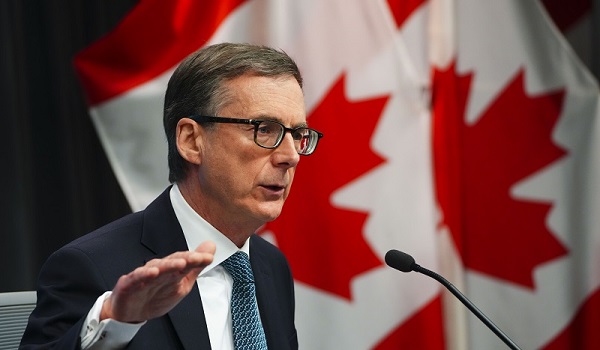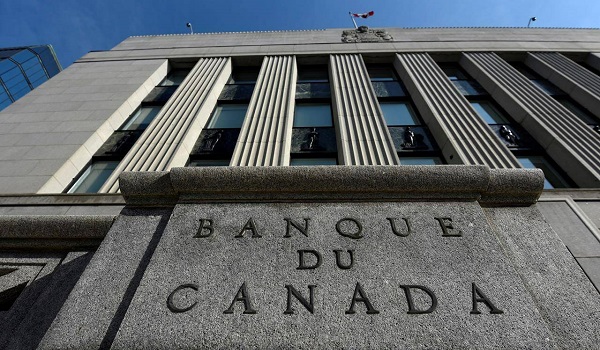Bank of Canada considered deferring interest rate cuts untill July, summary says
The Bank of Canada’s governing council considered holding off interest-rate cuts until July, but were persuaded to move earlier this month by a string of encouraging inflation reports and economic signposts suggesting that price pressures will continue easing, according to a summary of the discussions that informed the rate decision.
On June 5, the central bank cut its policy rate to 4.75 per cent from 5 per cent, the first cut in four years and the start of a long-awaited monetary policy easing cycle.
The summary of deliberations, published Wednesday, shows the bank’s six-person governing council, led by Governor Tiff Macklem, weighing the risks of cutting too soon against the dangers of waiting too long.
“Some members were more focused on the downside risks to inflation stemming from a weak economy and the continued effects of restrictive monetary policy. Others put more weight on the upside risks associated with persistence in wage growth and the potential for a housing market rebound,” the summary says.
Ultimately, the positive trend in inflation won the day. The annual pace of Consumer Price Index inflation has been below 3 per cent since the start of the year, after running as high as 8.1 per cent in 2022. The bank targets 2-per-cent inflation. It was 2.7 per cent in April.
“While they recognized the risk that progress could stall – as it had in the United States – there was consensus that with four consecutive months of easing in core inflation and indicators suggesting continued downward momentum, there had been sufficient progress to warrant a first cut in the policy rate,” the summary said.
The document echoes Mr. Macklem’s comments earlier this month that it’s “reasonable” to expect further rate cuts, but that the decline in interest rates will likely be gradual. The BoC’s latest forecast doesn’t see inflation falling to 2 per cent until next year, and Mr. Macklem has said he doesn’t expect to cut rates as quickly as he raised them in 2022 and 2023.
Financial markets see at least two more rate cuts before the end of the year, and put the odds of a quarter-point rate cut on July 24 at slightly above 60 per cent, according to Refinitiv data.
“The timing of any further reductions in the policy rate would depend on incoming data and its implications for the future path of inflation,” the summary said.
The Bank of Canada was the first G7 central bank to begin cutting rates. It was followed a day later by the European Central Bank, and a number of other advanced economy central banks are expected to start easing in the coming months.
The U.S. Federal Reserve is something of an outlier. It is dealing with more stubborn inflation and is not expected to start cutting rates until September at the earliest.
This has prompted concerns about a growing gap between Canadian and American interest rates, which could weaken the Canadian dollar against the U.S. dollar and increase the price of imports.
The BoC’s governing council played down that risk in their June 5 discussions: “While members agreed there are likely limits to how far monetary policy in Canada can diverge from U.S. policy, the limits were not close to being reached,” the summary said.
When debating the timing of rate cuts, the governing council looked at a number of competing risks.
On the downside, a wave of mortgage renewals “could curb spending and dampen economic activity and inflation more than expected,” the summary said. So far, only around half of Canadian homeowners with mortgages have renewed since interest rates started to rise in 2022. The remainder will reset over the next few years, and many could see large jumps in their monthly payments.
On the flip side, persistently strong wage growth combined with weak productivity growth could buoy inflation. And the governing council remains wary of a rebound in real estate prices as interest rates fall, as well as geopolitical turmoil, which could push up the price of oil and disrupt supply chains.
Canada’s central bankers are also watching population growth closely. This will depend on the implementation of federal government’s recently announced plans curb the growth in non-permanent residents.
“Since newcomers affect both demand and supply in the economy, members agreed that these plans would typically not have a large effect on the inflation forecast. But strong population growth could put upward pressure on shelter inflation, particularly rents,” the summary said.
The bank will get several key pieces of data over the next week or so, including April retail numbers on Friday, the May inflation report next Tuesday and April GDP numbers the following Friday.
This article was first reported by The Globe and Mail












